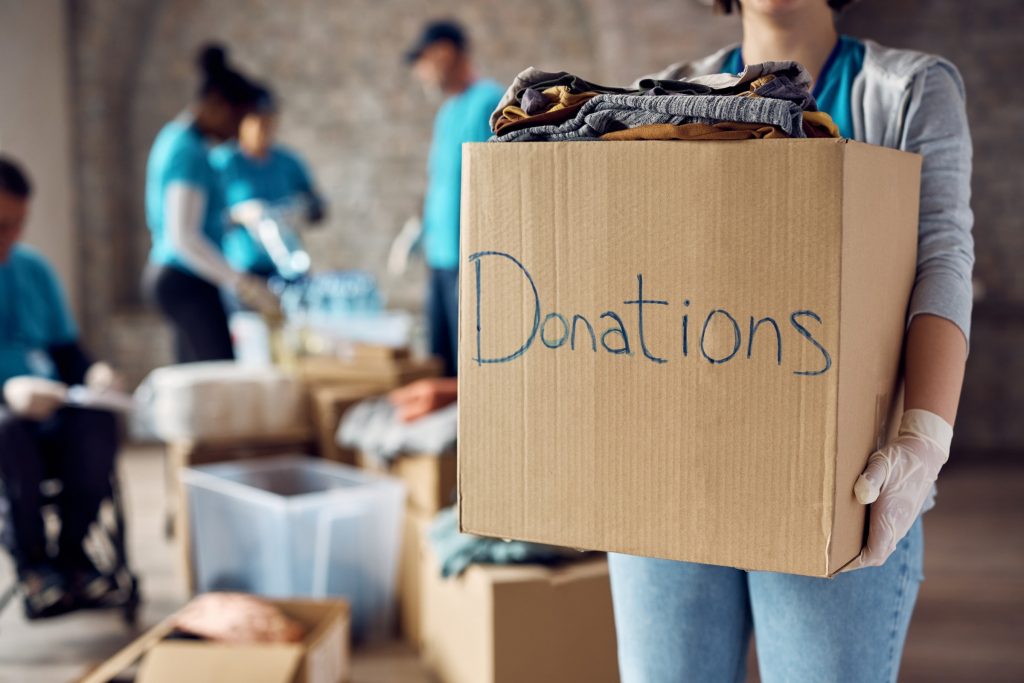How a Rainy Night and Beyoncé Kept DC Metro Running
August 9, 2023
In the captivating world of music and entertainment, artists wield a unique power that extends beyond the boundaries of the stage, leaving an indelible mark on the hearts and minds…

Karen Winterich was cleaning out her dresser drawer some years ago when she realized she was keeping an old pair of basketball shorts only because of the memories it brought back.
The shorts reminded her of beating a rival basketball team in junior high. It had been a great achievement. She did not want to keep the shorts in order to wear them again; she was keeping them purely to relive the memory of winning the game. She thought of the victory every time she looked at the shorts.
At the same time that she wanted to keep the shorts for the memories it held, she also knew she needed to clear clutter, such as those shorts, from her home. Then she had a sudden thought. A picture of the shorts could continue to bring back the memory of the game. She could donate the shorts to a nonprofit retail sales organization so someone else could use them, she recalls.
Winterich had hit on a great idea to rid your home of clutter. After all, we all have at least one—and in many cases many—items that we hold on to even though we no longer have any use for them.
Not only our homes but storage sheds across the country bear testimony to items that have a meaning for people but that they almost certainly will never use again. They are simply taking up space.
The reason we keep them is that the items still retain sentimental value. They have a meaning that says “this is who I am” or “this is who I was” so we are reluctant to let them go, points out Winterich, who is now professor of marketing at Pennsylvania State University.
Winterich realized that a cure for a cluttered home might be only a few photographs away.
The secret she learned is that people are more likely to donate their unused items to nonprofit businesses that deal in second-hand clothes if they take pictures of them first. Indeed, research has shown that people who were encouraged to take a picture donated from 15% to 35% more items than those who failed to take pictures.
In subsequent research that she conducted Winterich confirmed that people remain tied to their favorite items because memories, possessions, and identity are tied together psychologically.
What people really do not want to give up are the memories linked to the item rather than the item itself, says Rebecca Reczek, a co-author of the original study and a professor of marketing at Ohio State University.
The study found that people are more willing to give up their possessions if they are offered a way to keep the memory and the identity that is linked to that memory alive, Reczek adds.
Many nonprofits rely on the sales they make from donations of second-hand goods and clothes to run their operations. Charitable giving in the United States reached a record high $324.1 billion in 2020. The donations were divided among more than 1.5 million non-profit organizations.
People, in turn, can not only save money and space on storage but also can have peace of mind by donating their used goods to resale non-profit stores, Winterich suggests.

Americans have an average of 50 unused items in their homes, according to a survey by eBay and Nielson. These include accessories, clothing, and electronics.
Looked at from the point of view of the consumer, the issue could relate simply to cutting back on clutter, says Winterich.
Looked at from the perspective of the market place, on the other hand, the second-hand market relies on these donations.
The arrival of the digital era also has helped people to preserve old letters, cards, pictures, and even books digitally on the cloud. They are then happy to destroy the original documents or, if they believe they can be of some use to others, to donate them. Even awards, such as cups, can be photographed and then donated or thrown away. The memory remains in the picture.
In their original study the researchers advertised a donation drive to 797 students at six university residence halls before the students left for a holiday break.
One group of students were told in an advertising campaign to photograph goods that were sentimental to them before they donated them to the charity.
Another group of students were simply asked to donate goods that had some sentimental value to them.
The researchers noted a significant increase in the number of items that were donated by students who had been prompted to take pictures before donating them compared with those who failed to photograph them.
The picture helps remove the anxiety of parting with the item, Winterich explains.
The researchers held five follow-up studies to test other variations, such as whether the same pattern emerged for those students who sold their second-hand goods for cash. They did not find the same results.
Selling your used items does not have the same effect as when you donate them, the researchers found. The reason is that selling sentimental goods, which hold our identities and memories, are seen as almost sacred and that we should not therefore receive money for them says Julie R. Irwin, professor of marketing at the University of Texas, who also was a researcher for the study.
In a sense, they are too special to us to trade them for money, but if we donate them they remain special inner memories that we can preserve in pictures.
Many people also see giving away items they no longer need to keep as more ethical than receiving money for their used goods.
In other studies, Winterich has found that women tend to donate more than men. She also has found that when people think about being kind they tend to donate more.